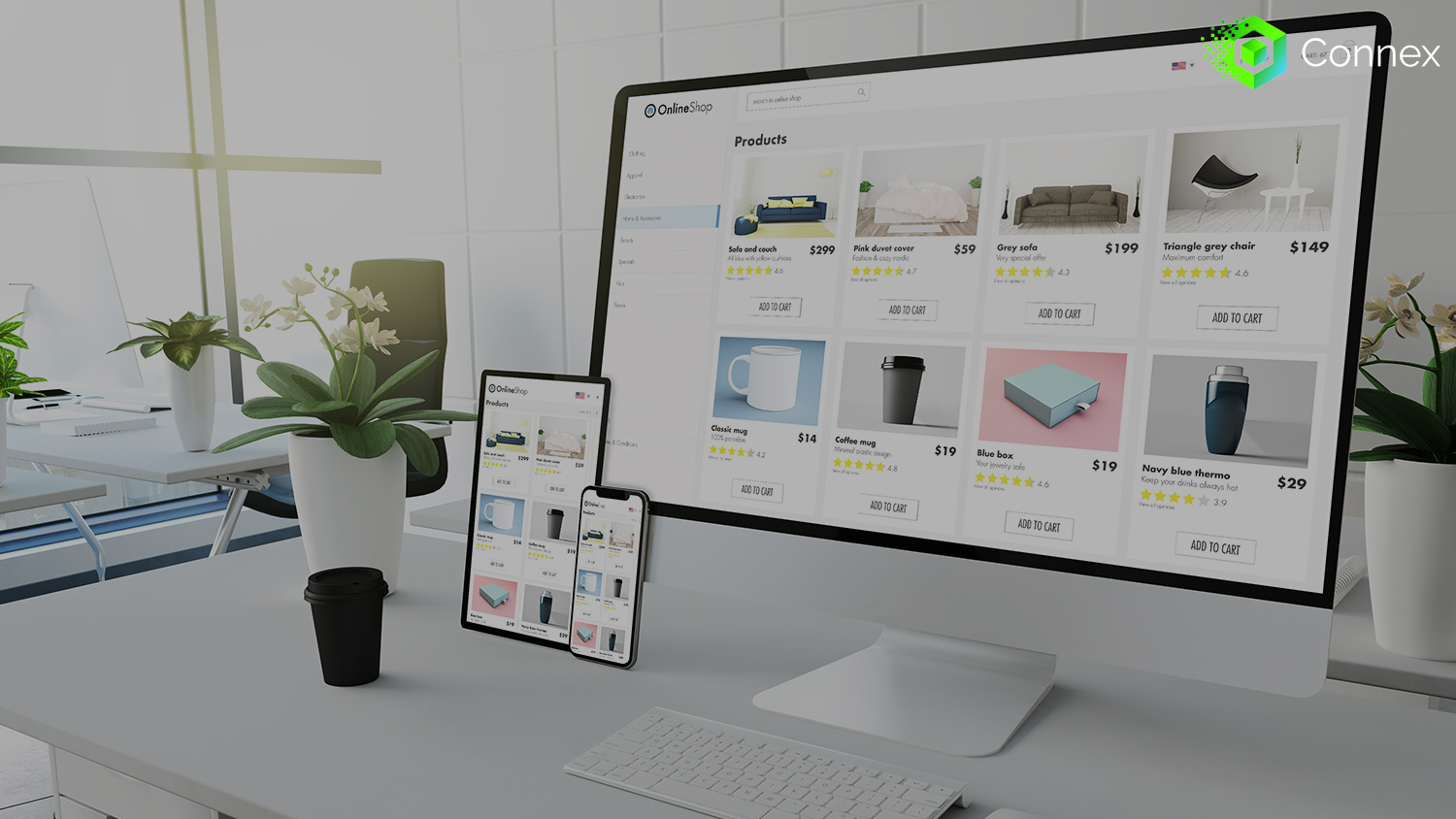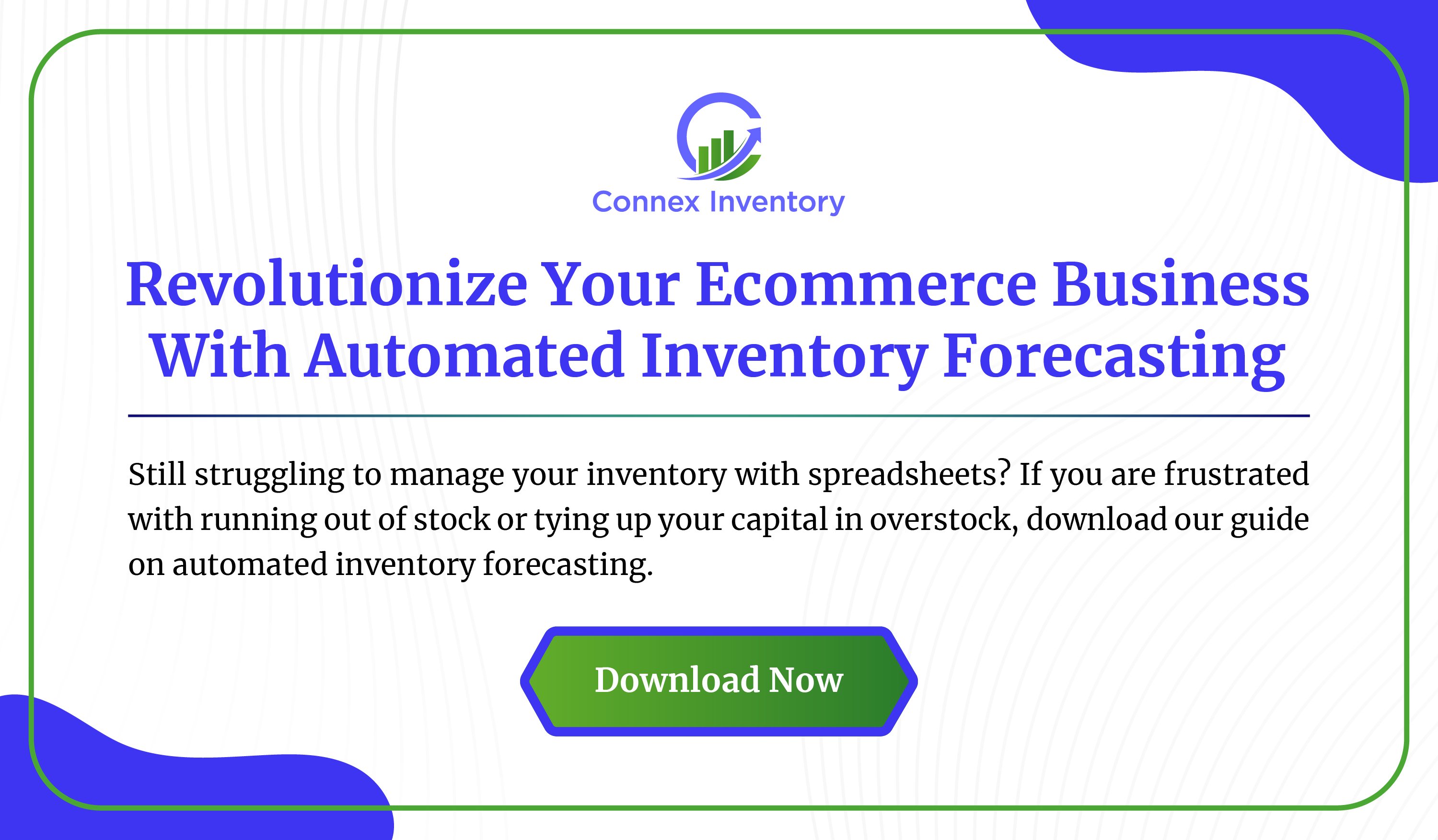As inventory management techniques and software evolve, it becomes increasingly vital for businesses to keep abreast of the latest trends and metrics that drive efficiency.
As you read further, we explore the essential metrics for effective inventory management automation, shedding light on embracing cutting-edge technology and forecasting tools to stay ahead of the curve and maintain a competitive edge.
4 Inventory Management Techniques
The allure of e-commerce inventory management lies in its ability to free you from continuous manual stock checks while ensuring you never unexpectedly exhaust a product line or inadvertently overstock. It also lets you keep tabs on crucial inventory KPIs and helps fulfill your business objectives.
While a wide array of management methods are available, choosing those that most accurately cater to your brand's needs and promise to be the most productive within your warehouse operations is crucial.
Economic Order Quantity (EOQ)
Economic Order Quantity (EOQ) refers to the optimal amount a company should order to minimize its inventory-related costs, such as those linked with shortages or carrying stock.
The fundamental aim of EOQ is to curtail expenditure; its formula is applied to determine the maximum quantity of units required (per order) to minimize purchase costs.
A key advantage of the EOQ model is its ability to provide tailored suggestions for your specific business. For example, EOQ may occasionally recommend making a larger purchase to leverage the benefits of bulk buying discounts, thereby reducing the overall costs associated with multiple deliveries.
Reorder point (ROP)
In inventory management, the reorder point (ROP) denotes the smallest quantity of a product a company should retain before it requires a new order. This concept considers a brand's buying and selling cycles, which likely differ across products.
Ordinarily, a reorder point is set higher than the safety stock level, considering it has to account for the order lead time.
Making orders at the reorder point ensures that replacement items are received promptly, avoiding stockout situations.
Furthermore, ROP is crucial in preventing holding costs that could arise from ordering too early, leading to excess inventory accumulation in your warehouse.
FIFO and LIFO
FIFO (First-in, First-out) and LIFO (Last-in, First-out) are methods employed to determine the cost of goods sold. While FIFO promotes selling the oldest inventory first, LIFO assumes the most recently arrived units, or newer ones, take precedence.
FIFO is an effective way to maintain inventory freshness, while LIFO can help prevent products from spoiling.
Each approach has its merits, but LIFO may not be practical for some businesses, as they prefer not to stagnate their older inventory in stock. This is why FIFO is more commonly adopted, as it ensures the oldest products are sold and leave the warehouse before anything else.
Collection-in-person
Despite the growing popularity of online retail, some customers still prefer to pick up their orders in person. The in-person collection offers advantages such as saving on shipping fees and ensuring packages are delivered to a secure location.
Retailers also benefit from this approach, with major players like Walmart and Amazon adopting it. The in-person collection is a key inventory management strategy for Walmart, contributing to its industry-leading position.
They provide pick-up services at over 2,000 retail locations and permit online orders to be returned in-store, effectively addressing a significant challenge in e-commerce.
Inventory Management: A Crucial Element for 3PL Success
Third-party logistics (3PL) firms consider inventory management a pivotal part of their operations.
As a result, crafting and implementing astute strategies for managing inventory can dramatically enhance a 3PL's operational efficiency, heighten client satisfaction, and boost the bottom line. A third-party logistic company can achieve the following with the right inventory management software.
Visibility and Control
For third-party logistics (3PL) firms, Connex Inventory can provide much-needed visibility and control over their clients' inventory. By offering a real-time, detailed view of stock quantities and precise item locations within storage facilities, Connex Inventory enables 3PLs to manage goods storage, handling, and transit adeptly, ensuring a fluid and efficient supply chain for their clients.
Moreover, Connex Inventory assists 3PLs in maintaining control over their internal operations, including establishing processes to avoid inventory discrepancies, managing inventory restocking, and training warehouse personnel in inventory management best practices. By streamlining these areas, 3PLs can deliver consistent and dependable service to their clientele.
Optimize Inventory Management
With features such as automated monitoring of stock levels, real-time reporting, and optimized picking and packing operations, Connex Inventory can significantly enhance inventory management efficiency for 3PLs.
Utilizing cutting-edge technology, our Inventory management system empowers businesses to handle complex inventory demands, cater to the diverse expectations of their clients, and stay ahead of the ever-changing industry requirements.
Customizable and Scalable Solutions
Connex Inventory offers the flexibility to customize and scale inventory management solutions. It enables 3PLs to adapt their services to specific industry norms, manages various product types, and handle variable inventory volumes resulting from seasonal changes.
By providing tailored and scalable inventory management solutions, Connex Inventory ensures that 3PLs can offer truly comprehensive and inclusive services to their clients, further strengthening their position in the competitive logistics landscape.
Important Metrics to Consider in Inventory Management
Inventory management techniques and software have evolved significantly, making it essential for companies to keep up with the latest trends and metrics for efficient management.
This section delves into the crucial metrics that make or break a business and highlights the importance of automating inventory management and forecasting.
Profitability of Every Product SKU
One of the most important metrics to consider in inventory management is the profitability of each product SKU (Stock Keeping Unit). An SKU is a unique identifier assigned to every product, making tracking and managing inventory easier.
Calculating the profitability of each SKU involves determining the gross profit margin and comparing it against the costs associated with holding, storing, and managing that inventory.
By analyzing SKU profitability, businesses can identify their most profitable products and focus on maintaining the right inventory levels for these items.
This ensures that the company invests its resources in products that generate the highest return on investment (ROI) and avoids tying up valuable capital in slow-moving or unprofitable inventory.
Comparing Profitability vs. Demand
Another critical aspect of inventory management is balancing profitability and demand. Products can be highly profitable but have low demand or low profitability but high demand.
Striking the right balance between these two factors is vital for a successful inventory management strategy.
High-demand, low-profit items are often essential to maintain customer satisfaction and can be used as loss leaders to attract customers.
On the other hand, high-profit, low-demand items should be carefully managed to minimize the risk of overstocking and ensure the business maintains a healthy cash flow.
Effective Inventory Management Techniques
Several techniques can be employed to ensure effective inventory management, including the economic order quantity (EOQ) method, the perpetual inventory system, and customer demand forecasting.
-
The EOQ model calculates the optimal order quantity that minimizes inventory costs, such as holding and ordering costs.
-
The perpetual inventory system continuously updates inventory levels based on sales and purchases, providing real-time data for better decision-making.
-
Customer demand forecasting is essential for proper inventory management, as it allows businesses to predict future sales based on historical data and current market trends.
Accurate demand forecasts help companies maintain optimal inventory levels, reducing the risk of stockouts or overstocking.
Inventory Management Software and Systems
Investing in inventory management software and systems is crucial for businesses to automate and optimize their inventory management efforts.
These tools offer several benefits, such as real-time tracking of inventory levels, automated reordering, and integration with other business systems, such as accounting and point of sale (POS) systems.
Inventory management software also provides advanced reporting and analytics, allowing businesses to gain valuable insights into their inventory performance and make data-driven decisions. As a result, these systems enable companies to streamline their inventory management processes, saving time and resources while reducing the risk of human error.
The Importance of Automating Inventory Management and Forecasting
Automation is becoming increasingly important for businesses to stay competitive and agile in today's fast-paced market. By automating inventory management and forecasting, companies can:
-
Reduce manual tasks and human error
Automation eliminates the need for time-consuming manual inventory management tasks, minimizing the risk of errors that can lead to stockouts or overstocking.
-
Improve decision-making
Automated systems provide real-time data and analytics, enabling businesses to make informed inventory levels and product mix decisions.
-
Enhance customer satisfaction
Accurate inventory management ensures that popular items are always in stock, resulting in fewer out-of-stock situations and happier customers.
-
Boost profitability
Automation helps businesses optimize proceed their inventory levels, reducing carrying costs and maximizing the return on investment (ROI) for each product SKU.
Challenges in Implementing Automated Inventory Management Systems
While automating inventory management and forecasting offers numerous benefits, businesses may face challenges implementing these systems. Some common challenges include:
-
High initial investment
Implementing an automated inventory management system can be costly, especially for small businesses. However, the long-term benefits and cost savings often outweigh the initial investment.
-
Integration with existing systems
Integrating new inventory management software with existing business systems, such as accounting and POS systems, can be complex and time-consuming. It is crucial to choose software that is compatible with current systems to ensure seamless integration.
-
Staff training
Employees must be trained to use the new inventory management system effectively. This may involve additional time and resources, but it is essential for maximizing the benefits of automation.
-
Data Accuracy
The effectiveness of automated inventory management systems relies on accurate data input. Businesses must ensure their data is up-to-date and accurate to make the most of automation.
Inventory Management Methods
Inventory management involves monitoring and governing your inventory as it's procured, sold, produced, and warehoused.
Bearing that in mind, there are several pivotal methods and inventory software solutions that you can adopt to bolster your inventory management process and more precision.
Inventory spreadsheets
Inventory spreadsheets monitor your inventory quantities and document fluctuations resulting from inventory rotation. Through these spreadsheets, businesses can gain a more accurate picture of their stock levels and pinpoint areas for potential enhancement in product performance.
Whether you're procuring, storing, or selling inventory, spreadsheets efficiently arrange all your data, making it easily available when needed.
Enterprise Resource Planning (ERP)
Integrating ERP systems, Connex Inventory facilitates seamless data flow across various business processes, including accounting, procurement, and supply chain functions.
This integration allows for efficient and concurrent management of multiple aspects of inventory management.
By incorporating Connex Inventory into their ERP systems, businesses can benefit from real-time inventory tracking, automated reordering, and accurate demand forecasting.
These features enable companies to maintain optimal inventory levels, reduce the risk of stockouts or overstocking, and ensure a smooth and efficient supply chain.
Moreover, Connex Inventory's advanced reporting and analytics tools provide valuable insights into inventory performance, empowering businesses to make data-driven decisions that optimize their inventory management strategies.
Amazon inventory management
Connex Inventory seamlessly integrates with Amazon's Seller Central, enabling businesses to manage inventory, overcome common challenges and effectively track their performance.
Combining Amazon's machine learning-driven restocking strategies with Connex Inventory's robust features, e-commerce brands can efficiently manage their inventory, mitigating issues such as overstocking, carrying costs, and inaccuracies in product pricing or descriptions.
The integration empowers businesses to synchronize their inventory data effortlessly between Amazon and Connex Inventory, ensuring real-time accuracy and visibility.
This streamlined approach allows sellers to make informed decisions, carryout effective inventory control, and enhance operational efficiency.
In addition, with Connex Inventory's advanced reporting and analytics capabilities, businesses can gain valuable insights into their Amazon sales performance, helping them fine-tune their strategies for success in the competitive e-commerce landscape.
Wrapping Up
Effective inventory management is crucial for businesses to maintain a competitive edge in today's fast-paced market. Employing the right techniques and methods, such as EOQ, ROP, FIFO, and LIFO, can significantly improve warehouse operations and lead to enhanced customer satisfaction.
However, to truly optimize inventory management, businesses should consider investing in an advanced inventory management system like Connex Inventory. It offers automation, real-time tracking, seamless integration with multiple platforms, and advanced analytics, allowing businesses to make data-driven decisions and streamline their inventory management processes.
Don't miss out on the benefits of implementing a robust inventory management system like Connex Inventory. Take action now and experience the advantages of increased efficiency, and enhanced profitability to meet customer demand. Boost your business's performance today by integrating Connex Inventory into your operations.




